Odd Things Americans Don’t Quite Understand About Canada
1 Mac The Moose

The largest moose statue in the world is located in none other than Canada itself. Mac the Moose was originally constructed in Moose Jaw, Saskatchewan, to bring in tourists, and still does today. Mac was built by Don Foulds using a steel frame, cement, and metal mesh. He used the cement to be able to sculpt the statue into an actual moose. Since this is the tallest moose statue in the world, Canadians take this title very seriously.
In 2019, Norway’s moose statue had surpassed the height of Mac. This was obviously not going to stand with the locals of Moose Jaw. So, after much consideration, they took matters into their own hands. They gathered donations from local businesses and took Mac’s antlers off. But not to worry! They spent months tirelessly working on new ones. With the help of many companies, they were able to replace Mac’s antlers with new and bigger ones. Currently, Mac is still the tallest moose statue in the world. (Minus that one little hiccup!)
2 Hair Freezing Contest

Takhini Hot Springs in the Yukon Territory receives hot water from the depths of the Earth’s crust at a toasty 116 degrees Fahrenheit. The natural hot tub, which draws hundreds of locals and tourists each year, is located just outside of Whitehorse. Visitors spend most of the year relaxing in the mineral-rich and odorless waters, which are privately owned by Takhini Hot Pools. During the winter months, however, the pools are transformed into heated arenas for the world’s only frozen-hairdo competition. The Hair Freezing Contest is both an artistic and scientific challenge. Participants submerge their heads, emerge into the cold air, and style their hair into stiff, eye-catching sculptures.
The results can range from frosty, mop-like tangles to dramatically manicured spikes, depending on one’s creativity and luck with the elements. Humans have been enjoying the springs for centuries, beginning with the Ta’an Kwäch’än First Nation. Chief Jim Boss, the council’s former leader, is said to have kept an old bathtub on the site. During the Klondike Gold Rush, he requested that the Canadian government recognize and protect his people’s lands, but was ignored. Two white settlers laid claim to the hot springs in 1907, paying two dollars per acre with the federal government’s permission. Later owners added a variety of amenities, ranging from hot dogs to swimming lessons, which have come and gone.
3 Moose Sign

Visitors to a Canadian national park were greeted with an unusual digital road sign: “Do not let moose lick your car.” The signs, it turns out, were put up by officials of Jasper National Park in Alberta’s western province to try to prevent moose from licking road salt off idling cars—a serious problem that can endanger the vehicles, the drivers, and the moose. The moose would wander onto the roads that ran through the 2.8 million-acre park, increasing the chances of cars hitting them and injuring or killing drivers.
The moose message isn’t the only head-scratching advice about human-animal relationships that Jasper National Park has given to visitors. The park once issued a tweet warning residents not to hang Christmas lights in open areas where they could become entangled in elk antlers. Elk frequently wander into Jasper—a township of only 4,600 people in the middle of a 4,200-square-mile national park—to seek refuge from predators such as wolves. Their antlers could become entangled in Christmas lights strung at ground level.
4 Bag Pipes Law

Victoria, British Columbia, has some fairly extensive regulations governing street performers, including a section devoted specifically to bagpipers. Along with rules governing where and when pipers may pipe, legislation states that a bagpiper may not perform “at the same time as another street entertainer whose performance includes bagpipes.” Unfortunately, this rules out the possibility of ever hearing “Dueling Banjos” performed with bagpipes.
The regulation, intended to address excessive noise complaints, drew national and international media attention, sparked a social-media storm, and resulted in an official comment from a representative of the Scottish government. The Vancouver City Council’s ban elicited such a strong reaction that it prompted a phone call between the Canadian city’s mayor and Scottish Culture Secretary Fiona Hyslop, who happened to be in town for Scotland Week 2012. Mayor Gregor Robertson assured Ms. Hyslop that the ban had been lifted following complaints from leading figures in piping circles, including Pipe Major Terry Lee of the six-time world champions, the Simon Fraser University Pipe Band of Vancouver.
5 No Reptiles In Public Law
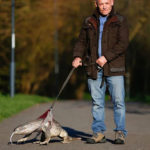
A local bylaw in Fredericton, New Brunswick, states that “no person shall have, keep, or possess a snake or other reptile upon the street or in any public place.” Although you are not permitted to walk down the street with your snake draped across your shoulders, it is legal to take your snake or reptile out in public “provided it is in a case, cage, or other container designed in such a manner that it will completely confine such snake or reptile.”
If you happen to own any kind of reptile, it’s best to just leave them at home. We know that is tempting to bring them out into the world and show them off, but unfortunately, it is not allowed. I mean, we would all love to see someone walking down the street with their bearded dragon, though. If this law seems a little bit odd to you, that’s because it is. Good luck to all of the reptile owners in New Brunswick.
6 Bags Of Milk

If you live in America, this is going to shock you. Americans are used to purchasing milk in different sizes, but none of those sizes include them being stored in a bag. Yes, a bag. Bagged milk isn’t so shocking in other countries, it’s actually very common to purchase your milk this way. Take Canada, for example. They have been purchasing their milk in bags for such a long time. They say it’s easier this way. Without the rigid edges of milk cartons, the bags can be stored much easier in the refrigerator.
Did you know that the idea for milk pouches actually came from a company out of the United States? The DuPont company introduced thin plastic bags known as the “pillow pouch.” They offered them to the Canadian market and began testing these pouches in Montreal and Vancouver. When Canada switched to the metric system, the bags of milk were much easier to convert into liters and began to gain more popularity throughout the country. When drinking the milk from the bag, people will typically place the unopened bag in a pitcher and cut the corner off to easily pour the milk.
7 Ketchup Lay’s

Ketchup flavored potato chips are a staple in Canadian snacking. Although, it is said that they don’t taste exactly like ketchup. Thetakeout.com said this about the chips: “You get the slap of vinegar and citric acid, the sweet, synapse twerking pull of cooked tomatoes and sugar, the crunch of deep-fried potato starch, and all the lip-sticking salt of a Dead Sea skinny dip.” It makes sense, ketchup flavored chips, that is. People put ketchup on everything!
These chips were born from Hostess, which is a Canadian company that was bought out by General Foods. Hostess was the largest chip company in Canada until they decided to make fruit-flavored chips. They released orange, grape, and cherry flavored potato chips. Needless to say, those flavors didn’t go over well with consumers. They took their time to meticulously plan out their next flavor of chip, and the ketchup chip was born.
8 Kraft Dinner
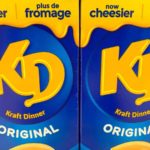
You may have heard of Kraft Macaroni and Cheese, but have you heard of Kraft Dinner? It’s the same thing, Kraft Dinner is just the Canadian version. Canadians love this dish so much that they consume 50% more mac and cheese than Americans do. That’s something, isn’t it? Not only do they consume more than Americans, but they also purchase 1.7 million boxes of the 7 million boxes sold each week. Canadians sure do love their golden cheesy pasta.
Since the pandemic, there has been an even higher amount of Kraft Dinner sales in Canada. These sales have been so high that the Kraft-Heinz factory in Montreal is making sure to have employees on staff 24/7. The company wants to make sure that they are able to meet the consumer’s demand, and what other way to do that than by having their employees work as much as possible? Before the pandemic, they would produce around 3 million boxes. Now, they produce over 4 million Kraft Dinner boxes.
9 No Pennies
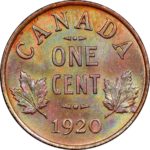
Can you imagine living in a world with no pennies as a means of monetary transactions? Well, many countries have initiated this, including Canada. There comes a point in time when producing the physical coin costs more than the coin itself, and that’s exactly what happened here. Of course, they will still accept your money if you have pennies, but they will no longer produce them. The Canadian government has advised business owners to round to the nearest nickel for cash transactions.
With the end of the penny, charities across Canada have initiated new donation incentives. In 2013, Free the Children raised over 70 million pennies in their efforts to provide clean drinking water to developing countries. As many people are currently aware, pennies are bad for recirculation. Since they have such little value, it wasn’t worth it for people to have to carry them around. They didn’t throw them out though, many people kept them safe at home. It only made sense to phase out the penny.
10 Maple Syrup On Snow

Everyone is well aware that Canadians love their maple syrup. And why wouldn’t they? It’s delicious! You can use it for so many different meals and snacks. Plus, it’s easily accessible to the country. Canada produces over 85% of the world’s maple syrup. It’s basically their trademark. But did you know that this sweet treat is only harvested once a year? Even though Canada produces such a high amount of the product, Quebec produces 70% of maple syrup alone.
The maple syrup Snow candy is candy in its most basic form. It’s made by pouring hot maple syrup onto a fresh bed of snow. The cold snow immediately stops the syrup from cooking and quickly cools it to the consistency of taffy. This method of making maple candy or maple taffy is a popular winter tradition in Canada. It’s a common occurrence at outdoor winter carnivals and maple syrup festivals in late winter and early spring. The maple trees are tapped at this time, and the sap is collected in buckets and boiled into maple syrup.
11 Upside Down Church

This church is located in the East Village of Calgary, Alberta. It’s twenty-five feet tall, and it is upside down! Dennis Oppenheim created this church to “root out evil” and it was first open to view in 1997. This sculpture was in Calgary for 5 years until 2014 and returned in 2019. But you might be wondering how exactly this sculpture is meant to root out evil. According to the artwork description, this sculpture has “a steeple thrust into the ground and base raised up high as if to invite scrutiny from the heavens.”
But another description of this sculpture’s meaning is, “A country church is seen balancing on its steeple as if it had been lifted by a terrific force and brought to the site as a device or method of rooting out evil forces.” This piece is made of galvanized steel, plexiglass, and Venetian glass. It has also been in more than one location throughout its time. It was first located in the Ramsay neighborhood of Calgary and traveled to Vancouver and Europe before making its way back to Calgary.
12 Poutine

Poutine is a delicious meal consisting of French fries topped with fresh cheese curds and a thick, brown gravy. It originated in the province of Quebec in the 1950s but has since spread across Canada. Poutine is the ultimate comfort food for some people. The meal appears to be a shamble, but it tastes delicious. It has historically been associated with diners, fast-food restaurants, pubs, sports stadiums, and food vendor trucks. Both the identity of the person who created it and the origin of its name are contentious. Although many people outside of Quebec pronounce poutine as “poo-teen,” the correct pronunciation is “poo-tin,” at least in Quebec.
Making authentic poutine is more than just getting some French fries (or chips), sprinkling some cheese on top, and then adding some gravy. Each of the meal’s three components has specific requirements. The French fries should be medium in thickness. They should also have a crispy exterior and a soft interior. The cheese must be fresh and in the form of curds. When covered in hot gravy, the curds must soften but not melt. Brown, rich, and flavorful gravy is required. It must also be of the proper consistency. It shouldn’t be watery, but it should be thin enough to get between the French fries. The cheese curds and hot gravy must be added just before serving the poutine.
13 Jail Hostel

Have you ever wondered what it would be like to spend a night on death row? You can now, though you won’t be getting much sleep. This jail-turned-hostel has enough history, intrigue, and apparitions to send shivers down your spine. The Ottawa Jail Hostel, originally known as the Nicholas Street Gaol, was designed by Henry Hodge Horsey, a prominent 19th-century architect who designed many civic buildings and churches in Ottawa and eastern Ontario. The jail, which was built directly next to a courthouse, was the site of many executions, including the hanging of assassin Patrick J. Whelan in February 1869, in front of a crowd of over 5,000 people.
Over the years, many inmates died at the Nicholas Street Gaol from causes ranging from malnourishment to disease to generally unsanitary living conditions. The cells were small, and the bathrooms were even smaller. These inmates were frequently buried in unmarked graves on the jail grounds. As you might expect, this makes the building a hotspot for paranormal activity. The deteriorating structure was demolished in 1972. Shortly after, Hostelling International purchased the jail and converted it to its current use. The majority of the original structure and fixtures have been preserved and restored. The top floor of the Nicholas Street Gaol, which served as the death row, was restored to its original state and is now open for daily tours (and the occasional overnight stay).
14 The Apologies

Ok, Canada. We know that apologies are meant to be genuine, but when you say them so often, doesn’t that defeat the purpose? Canadian culture is so apologetic that the word has come to lose some of its meaning. It is basically an automatic response to any scenario, whether it requires an apology or not. Dr. Rebecca Heiss studied evolutionary biology and stress management and said that “This pressure to get along has a biological root: the fear of rejection.”
Is that it? Are you Canadians just scared of rejection? Heiss also said, “By apologizing, you promote a sense of belonging, that you’re willing to be wrong and admit that you’ve crossed the line to keep the peace.” She also said that another reason for compulsive apologies is guilt. It’s called “culturally-built emotion.” So, maybe this sense of being sorry just comes from the rest of the country. Since everyone is saying they are sorry so often, it’s hard not to join in with them. There could definitely be worse things to do.
15 Iceberg Harvesting

Hundreds of icebergs calved from Greenland 10,000 years ago and travel down Iceberg Alley each year between late April and early June, making Canada’s east coast the world’s iceberg capital. The ice takes three or four years to travel from the Petermann Glacier. When you see these gleaming white giants in the water, you are only seeing about 10% of the iceberg. The remaining 90% is submerged beneath the water. However, getting too close can be dangerous. If an iceberg rolls, it will most likely sink any nearby boats. The estimated distance to stay safe from an iceberg is either one equal to the iceberg’s length or twice its height, whichever is greater.
Each season, they will get up close to the iceberg and begin digging into it with a hydraulic claw to collect the ice. They melt down the ice they’ve collected and turn it into vodka. In the late 1990s, Ed Kean had the idea to create iceberg vodka. He started collecting iceberg fragments while fishing to keep his catch fresh. When the fishery closed in the 1990s, Kean decided to pursue a new career in the “bergs.” He started working for an oil company to assess the damage that an iceberg could cause to an oil rig, but he quickly realized that this wasn’t the path for him. Fortunately, he had a brilliant idea that earned him the title of the most famous iceberg harvester. Who would have guessed that these ice cubes could transform into something so magical?
16 Bathtub Race

When you think of Canada, you think of strange quirks, strange food, and strange sports… like racing bathtubs. Indeed, Canada is home to the original bathtub race, which takes place every July in Nanaimo, British Columbia. Nanaimo was looking for a way to put its beautiful city on the map in the 1960s. The original Nanaimo to Vancouver Great International World Championship Bathtub Race was born just in time for Canada’s 100th anniversary.
The first race in what is now known as the “Hub, Pub, and Tub City” took place in 1967, and bathtubs have been racing in Nanaimo ever since. In the decades since that first race in 1967, new versions of the bathtub race have sprung up across Canada. Some are landraces in which participants put wheels on their tubs and ride the course. Others, like the original, are bathtub boat races in which bathtubs are transformed into boats and raced on water. Bathtub races, whether on land or at sea, appear to have caught on in this wonderfully unique country.
17 Loonies & Toonies
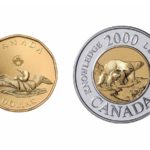
Canada has the same denominations as the United States: cents (which don’t buy much and aren’t picked up off the ground like in the United States), nickels (which don’t have much purchasing power either), dimes, quarters, dollars (called “Loonies” because the standard design depicts the bird called a Loon,) and two-dollar bi-metallic coins (called “Toonies,” apparently named in honor of the one-dollar coin of which Canadians are very fond).
The various Canadian coins are all the same size as their counterparts in the United States, despite being made of very different metals. Because the Loonies and Toonies are easily distinguishable due to their different sizes and colors, Canadian cashiers simply toss them together in the same compartment. Since 2012, Canada has stopped producing the penny, and cashiers are most likely using the empty coin spot to separate the $1 and $2 coins. So, how did the Canadians manage to get these dollar coins into circulation? Simply put, they ceased production of the $1 banknote, and the deal was sealed. There was little debate or outrage; the government simply took action, and people adjusted as needed.
18 Canadian Slang
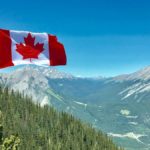
In the grand scheme of English varieties, Canadian English appears to be neither here nor there. On the one hand, Canadians prefer “British” spellings of words such as “color” and “centre.” Anyone who has heard an anglophone Canadian speak will notice that the pronunciation is more similar to General American English. In fact, most people will have difficulty distinguishing between Canadian and American English speakers.
But every now and then—most notably when Canadians say “out,” “about,” or “eh”—there’s no denying that Canadian English has some distinct features. The term “Canadian English” is insufficient to describe the country’s linguistic diversity, just as there is no true American, British, or Australian English. Standard Canadian English refers to the language variety spoken by Anglophone or multilingual speakers born in Canada and living in urban areas. Other factors, such as specifying the variety spoken across central and western Canada among middle-class speakers from English-speaking families, are included in some definitions.
19 Weird Meats

Beef, chicken, and pork are the most common meat options in an American supermarket. Of course, there are variations on these meats, but this is the general selection you’ll find in a US market. However, in Canada, the meat section of the market has a lot more variety. Don’t be surprised if you find a camel, horse, venison, and ostrich in most Canadian supermarkets. Canadian chefs are known for their daring use of nontraditional meats in their dishes. Some chefs have even mentioned using kangaroo meat in their dishes!
Though exotic meat consumption is not well tracked, it appears to be increasing, and some industry insiders and observers believe it will continue as foodie culture grows. According to Euromonitor International, consumption of less traditional meats such as horse, venison, camel, rabbit, and game increased by 10.6 percent per year in Canada between 2010 and 2015. Horse, quail, kangaroo, and other meats have been experimented with by Canadian chefs. Customers at Toronto restaurant The Beast, for example, can choose from a list of animals, such as water buffalo or elk, and the restaurant will prepare a six-course tasting menu using the entire animal.
20 The Grand Gathering

You must include this on your bucket list. Whether you think this is just some beautiful art, or a little bit creepy, this art installation is a must-see. Located in Sainte-Flavie, Quebec, there are human-esque wooden figures that are the work of Marcel Gagnon. There are over 100 figures that rise through the waters of the St. Lawrence river. Gagnon created “Le Grand Rassemblement,” or The Grand Gathering, when he started carving stone and wood to study for his paintings.
He would place these figures at varying depths in the river so that they would disappear and reappear with the tide. Each carving is unique. Some are simply just a face, and some have more prominent features, like a hunched back. The newest addition to his installation is wooden rafts. He placed some of his statues on the raft so that they would float on the water when there was a high tide. Even if you think this is incredibly odd, it is still something to admire.
